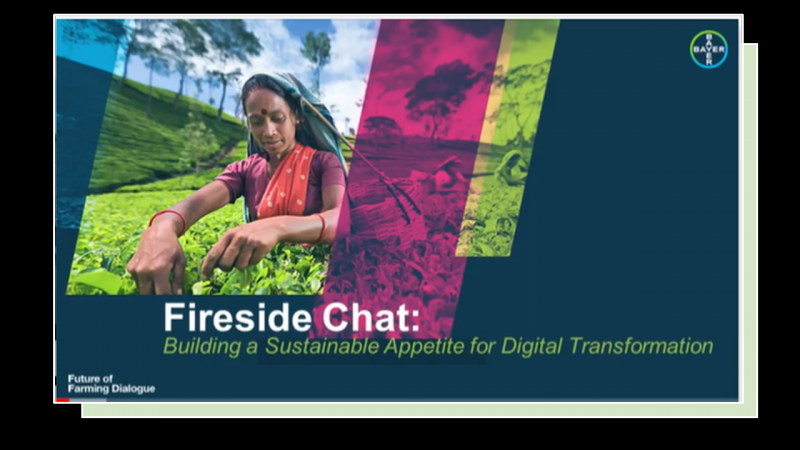On November 16, the WFO Secretary General Arianna Giuliodori joined “The Fireside Chat: Building a Sustainable Appetite for Digital Transformation“, a session of the Future of Farming Dialogue virtual event series hosted by the Crop Science Division of Bayer.
The event aimed at exploring how we can make available worldwide digital transformation in agriculture.
Here are some key messages from the WFO Secretary General:
- Innovation is the way forward for the agricultural sector. Digital certainly is part of that, but it also includes innovation in business models, in the value chain and in the way contracts are designed and run. We must think of the whole system when we innovate. In terms of digital applications, digital innovation is a huge focus at the moment, starting with small scale farmers. But it’s not about tech providers prescribing innovation to farmers. It’s about collaboration – listening first and fully understanding the challenges and opportunities for the farmers and their communities to build suitable paths forward.
- Farmers are economic actors. When it comes to digital technologies, solution developers should demonstrate a return on any investment of time and resources. There must be public-private collaboration to ensure the right incentives are in place and paired with the right tools, including data management methods that bring value to small scale farmers, not companies.
- Farmers are committed to the fight against climate change, to conserving biodiversity and creating transparency for consumers, stressing on the need to pursue more daring and surprising collaborations – focused on the farmer – to make strides toward our 2030 climate agenda.
- Digital is disruptive, but through a partnership with farmers, we can supplement traditional knowledge and indigenous techniques with new tools rather than replace them. Technology can help farmers be more efficient and profitable while still leveraging their traditional approaches.
- Technology today is becoming cheaper and more accessible, with growing attention around building IoT solutions. In this new world order, there are challenges, but the circumstances have also created an opportunity. Digital tools are now being used to shorten value chains and increase market access for small producers. Given that the pandemic hit during the harvest or production phase for many, new solutions have focused on bridging the gap to the market.
- Data is helping address issues like food loss and waste by matching supply and demand, overcoming bottlenecks in the value chain and even creating direct connections with consumers (i.e., direct deliveries). As the pandemic continues, we will enter a new phase in which digital tools can help bridge another key gap: finance and insurance. These tools can help farmers prepare for the next season if they haven’t earnt anything from the previous one. Digital tools can offer a new insurance approach by ensuring farmers are implementing environmentally friendly techniques, and overall bridging the gap between different actors in the food chain.
